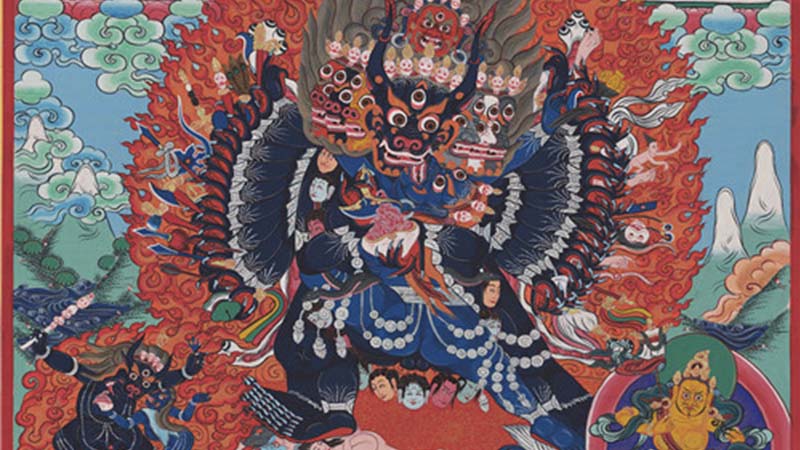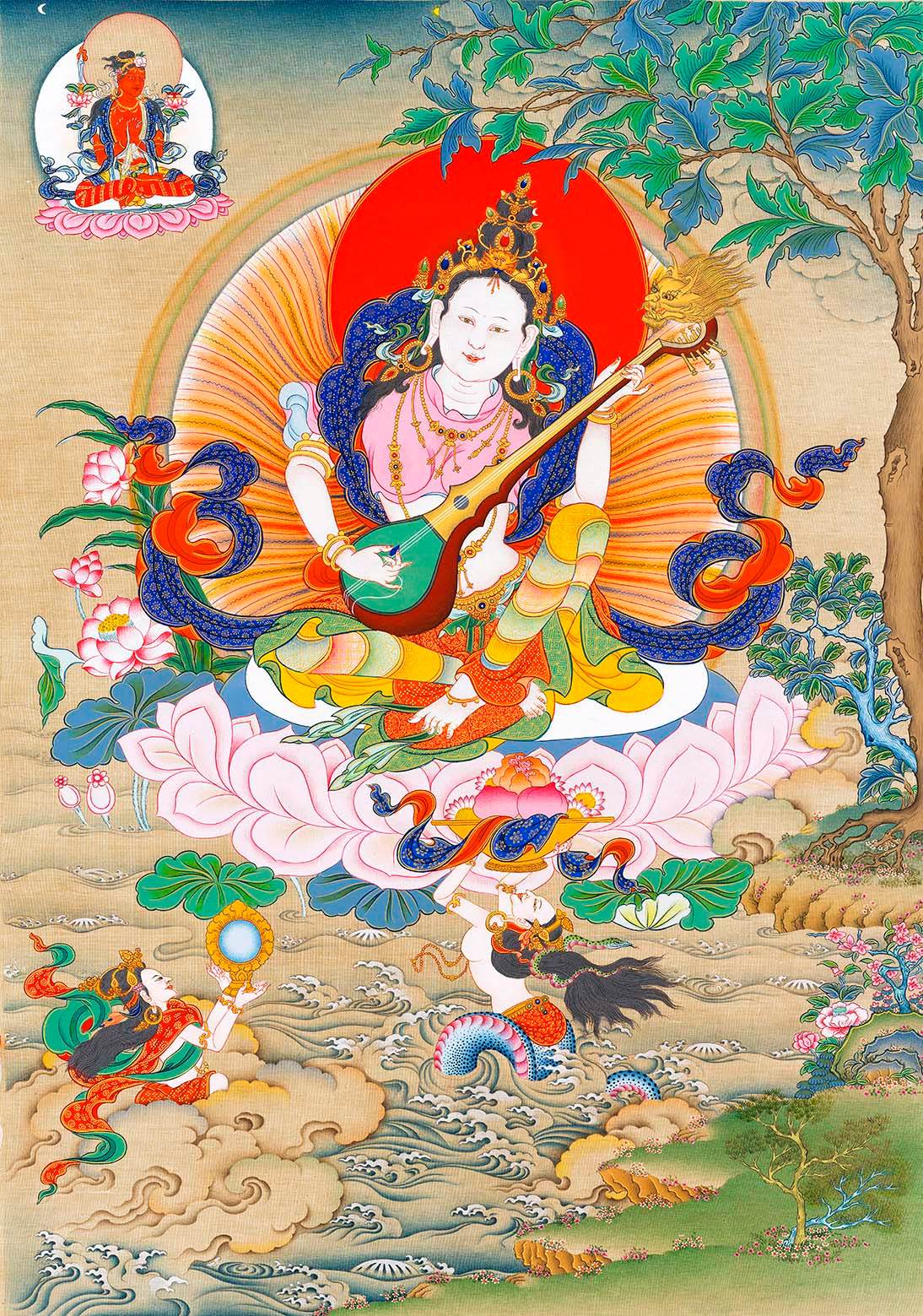
The Wrathful Yamantaka: The Conqueror of Death and Ignorance
Yamantaka,
the Terrifying One, embodies the transformative power of wisdom to annihilate ego and death itself.




Introduction to Yamantaka
Yamantaka (Sanskrit: Yamantaka; Tibetan: Dorje Jigje) is a central wisdom deity (yidam) in Tibetan Buddhism, particularly within the Gelug school. He is the fierce manifestation of Manjushri, the Bodhisattva of Wisdom. His terrifying form is not meant to invoke fear, but to represent the relentless power of enlightened wisdom in cutting through the deepest roots of ignorance, ego, and mortality.
Unlike peaceful deities, Yamantaka's wrathful appearance symbolizes the forceful and immediate method required to destroy the most stubborn mental afflictions.

The Origins and Significance of Yamantaka
The legend of Yamantaka originates from the story of the Bodhisattva Manjushri confronting Yama, the Lord of Death. Yama represented the cycle of samsara and the limited belief in a permanent self. To conquer death, Manjushri assumed a form even more wrathful and powerful than Yama, thus becoming "The Conqueror of Death" (Yamantaka).
This victory symbolizes the ultimate triumph of wisdom over the illusion of death, showing that true immortality is found in the realization of enlightenment.

The Symbolism of Yamantaka
Yamantaka's complex iconography is a detailed map of the path to enlightenment:
Form (Wrathful): Represents the fierce and uncompromising nature of wisdom destroying ignorance.
Nine Heads: The central buffalo head symbolizes the destruction of the Lord of Death, while the others represent the manifold aspects of Buddhist teachings and paths.
Thirty-Four Arms: Signify the "Thirty-Seven Factors of Enlightenment," holding various weapons to subdue negative forces.
Sixteen Legs: Trample upon various worldly gods and animals, symbolizing the overcoming of all negative emotions and attachments.
Consort (Vajravetali): Represents the union of wisdom (Yamantaka) and compassionate means (his consort), essential for enlightenment.

The Yamantaka Mantra
A powerful mantra associated with Yamantaka is:
"Om Ah Ra Pa Tsa Na Dhih"
Meaning of the Mantra:
This is the sacred mantra of Manjushri, the essence of Yamantaka's wisdom nature.
Om Ah: The seed syllables of body and speech.
Ra Pa Tsa Na: Symbolize the purification of the five poisons (ignorance, attachment, aversion, pride, jealousy).
Dhih: The seed syllable of wisdom and intellect.
Chanting this mantra invokes Yamantaka's blessings to eradicate ignorance, purify negative karma, and develop discerning wisdom.
How to Connect with Yamantaka
Meditation: Visualizing Yamantaka is an advanced practice, often done under the guidance of a teacher, to transform anger and fear into wisdom.
Mantra Recitation: Chanting his mantra helps cultivate the wisdom that sees the true nature of reality.
Contemplation: Reflect on the symbolism of his form to understand how wisdom conquers inner obstacles like anger, pride, and attachment.

Conclusion
Yamantaka is a profound symbol of the power of enlightened mind. His wrath is not against external enemies, but against the inner foes of ignorance and ego that bind us to suffering. He teaches that the most profound peace is found by courageously facing and transforming our deepest fears.
May the fierce wisdom of Yamantaka shatter the chains of ignorance and fear on your path!
Have you ever contemplated the profound symbolism of a wrathful deity like Yamantaka?
Share your thoughts in the comments below!






